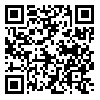Volume 20, Issue 4 (2020)
QJER 2020, 20(4): 93-123 |
Back to browse issues page
Download citation:
BibTeX | RIS | EndNote | Medlars | ProCite | Reference Manager | RefWorks
Send citation to:



BibTeX | RIS | EndNote | Medlars | ProCite | Reference Manager | RefWorks
Send citation to:
Mohammadi T, khiabani N, Bahrami J, fahimifar F. Comparison of Different Methods of Predicting Iran's Economic Growth with an Emphasis on Dynamic Model Selection and Dynamic Model Averaging. QJER 2020; 20 (4) :93-123
URL: http://ecor.modares.ac.ir/article-18-38166-en.html
URL: http://ecor.modares.ac.ir/article-18-38166-en.html
1- Associate Professor of Economics, Allameh Tabataba’i University , mohammadi@atu.ac.ir
2- Associate Professor of Economics, Allameh Tabataba’i University
3- Ph.D Candidate of Economics, Allameh Tabataba’i University
2- Associate Professor of Economics, Allameh Tabataba’i University
3- Ph.D Candidate of Economics, Allameh Tabataba’i University
Abstract: (2358 Views)
In recent decades, due to the importance of future values of macroeconomic variables, a range of predicting methods and models has been studied and evaluated. The main purpose of this paper is to compare different methods of predicting Iran's economic growth using seasonal time series data during 1990-2017. To this end, economic growth is predicted using dynamic model averaging (DMA), dynamic model selection (DMS), BMA, BVAR, TVP and AR models in three prediction horizons (one, four and eight seasons). The models used in this study are categorized into three spectra, large-scale (including 112 variables in nine factor blocks), average-scale (including 10 variables) and univariate models. The results show that the predictions of DMS and DMA are more efficient than other traditional prediction.
Article Type: Original Research |
Subject:
Economics and Econometrics
Received: 2019/11/9 | Accepted: 2020/02/1 | Published: 2020/12/6
Received: 2019/11/9 | Accepted: 2020/02/1 | Published: 2020/12/6
Send email to the article author
| Rights and permissions | |
 |
This work is licensed under a Creative Commons Attribution-NonCommercial 4.0 International License. |







